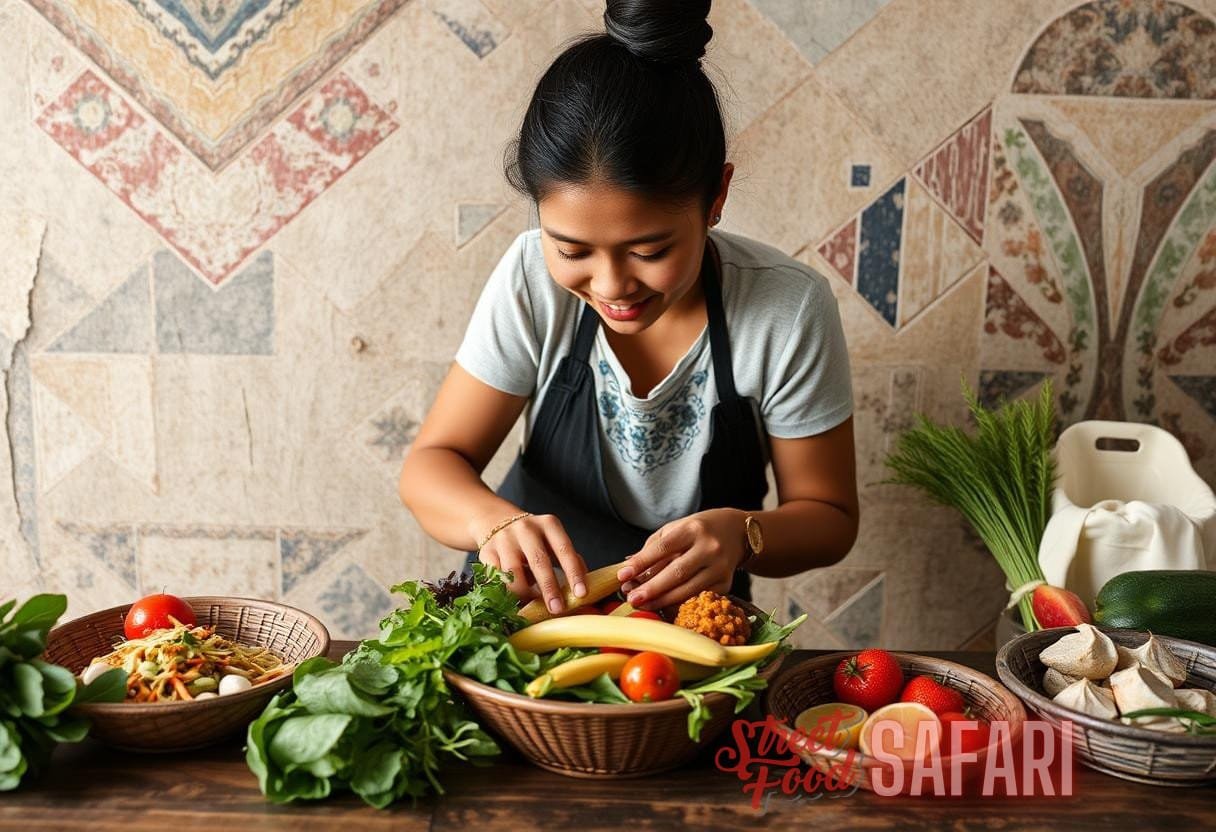Unearthing Culinary Heritage: Exploring Indigenous Dishes and Cultural Significance in Travel
Traveling to different countries allows us the opportunity to explore not only the landscapes and landmarks but also the rich and diverse culinary traditions of the indigenous communities. Indigenous dishes are not only delicious but also tell a fascinating story of cultural heritage, history, and the relationship between humans and nature. In this article, we will delve into the world of indigenous travels, discover the cultural significance of these dishes, and explore how they contribute to the overall travel experience.
The Importance of Indigenous Food in Travel
Indigenous cuisines are an essential part of the cultural fabric of a country. These dishes incorporate traditional ingredients, cooking techniques, and storytelling, showcasing the unique history and heritage of the indigenous communities. Exploring indigenous food while traveling allows us to connect with the local people, understand their way of life, and show respect for their culinary traditions. Additionally, by supporting indigenous food establishments, we can contribute to the preservation and revitalization of these cultural practices.
One of the most exciting aspects of indigenous travels is the opportunity to taste dishes that have been passed down through generations. These recipes often rely on local and seasonal ingredients, ensuring that each dish is a reflection of the environment in which it is prepared. From wild game and foraged plants to traditional farming practices, indigenous food represents a sustainable and nature-dependent way of nourishment.
Moreover, indigenous dishes often carry symbolic meanings and are associated with cultural ceremonies and rituals. By engaging with these culinary traditions, travelers can gain insights into the spiritual beliefs, ancestral connections, and values of the indigenous communities. The sharing of food becomes a gateway to understanding and appreciating the cultural heritage of a place.
Exploring Indigenous Food and Its Cultural Significance
Every country has its own unique indigenous culinary heritage, with recipes and cooking techniques that have been honed over thousands of years. Let’s take a journey across continents to explore some of the world’s most fascinating indigenous dishes:
North America
1. Frybread (Navajo)
Frybread is a staple among many Native American tribes, including the Navajo. It is made from simple ingredients such as flour, water, salt, and baking powder. The dough is stretched and flattened before being deep-fried until it becomes golden and crispy. Frybread is often served with savory toppings like ground beef, beans, cheese, and lettuce, or sweet toppings like honey and powdered sugar. This humble dish carries a deep cultural significance, representing resilience and survival in the face of adversity.
2. Wild Rice (Ojibwe)
Wild rice, known as manoomin in the Ojibwe language, is a staple food among the Ojibwe people of North America. It grows naturally in lakes and rivers and is harvested by hand in traditional wooden canoes. Wild rice is highly nutritious and has a nutty flavor. It is often used in soups, salads, and as a side dish. The process of harvesting wild rice is deeply rooted in Ojibwe culture and is celebrated through annual wild rice festivals.
South America
1. Ceviche (Peru)
Ceviche is a seafood dish that originated in Peru and is now enjoyed across South America. It typically consists of fresh raw fish or seafood marinated in citrus juices, such as lime or lemon, along with onions, chili peppers, and cilantro. The acid in the citrus juices effectively “cooks” the fish, resulting in a refreshing and tangy dish. The origins of ceviche can be traced back to pre-Columbian times, where it was part of the diet of indigenous communities along the Pacific coast.

2. Quinoa (Andean Region)
Quinoa, a nutritious grain-like crop, has been a staple food in the Andean region for thousands of years. It was considered sacred by the Incas and was known as “the mother of all grains.” Quinoa is rich in protein, fiber, and essential minerals. It can be cooked and used in various dishes, including salads, soups, and as a substitute for rice or couscous. Its versatility and nutritional benefits have made it a popular ingredient worldwide.
Africa
1. Bobotie (South Africa)
Bobotie is a traditional South African dish with roots in Cape Malay cuisine. It is a baked dish made with spiced minced meat, usually beef or lamb, and a creamy egg-based topping. The meat is seasoned with a blend of spices such as turmeric, coriander, and cumin, along with dried fruit and nuts. Bobotie is often served with yellow rice and chutney. This dish is a fusion of flavors influenced by the indigenous Khoisan people, Dutch settlers, and African spices.
2. Injera (Ethiopia)
Injera is a staple food in Ethiopian and Eritrean cuisine. It is a type of sourdough flatbread made from teff, a nutritious grain native to the region. Injera has a slightly tangy flavor and a spongy texture. It is traditionally used as both a plate and utensil, with various stews and dishes placed on top and torn pieces of injera used to scoop up the food. Injera is a symbol of community and togetherness, as it is often shared and eaten with family and friends.
Asia
1. Nasi Lemak (Malaysia)
Nasi Lemak is a beloved dish in Malaysia, particularly among the Malay community. It consists of fragrant coconut rice served with a variety of accompaniments. The traditional accompaniments include sambal (a spicy chili paste), fried anchovies, roasted peanuts, cucumber slices, and hard-boiled eggs. Nasi Lemak is often eaten for breakfast and is considered the national dish of Malaysia. It reflects the diverse culinary heritage of the country, combining indigenous flavors with influences from Chinese, Indian, and Indonesian cuisine.
2. Kimchi (Korea)
Kimchi is a staple side dish in Korean cuisine and is made from fermented vegetables, primarily Napa cabbage and Korean radishes. The vegetables are brined in a mixture of salt, garlic, ginger, and chili pepper, allowing the beneficial bacteria to thrive and create lactic acid, giving kimchi its signature tangy flavor. Kimchi is not only a delicious addition to any meal but also a probiotic-rich food that promotes gut health. It is deeply ingrained in Korean culture and is present at almost every Korean meal.
Conclusion
Exploring indigenous food during our travels opens up a whole new dimension of cultural understanding and appreciation. These dishes not only nourish our bodies but also nourish our souls with stories of resilience, agricultural heritage, spiritual beliefs, and cultural traditions. By seeking out indigenous food establishments and engaging with the local communities, we can ensure the preservation of these culinary traditions for future generations to enjoy.
Travelers who yearn for authentic and immersive culinary experiences can find more information on indigenous travels, uncovering hidden gems, and ensuring food safety abroad in the articles “Food Exploration: Unveiling the Secrets of Authentic Culinary Experiences” and “Unveiling Hidden Gems: Authentic Culinary Experiences and Food Safety Abroad – The Ultimate Article for Travel Tips”.
So go ahead and embark on a culinary journey to uncover the flavors, stories, and cultural significance hidden within indigenous dishes. Bon appétit!


